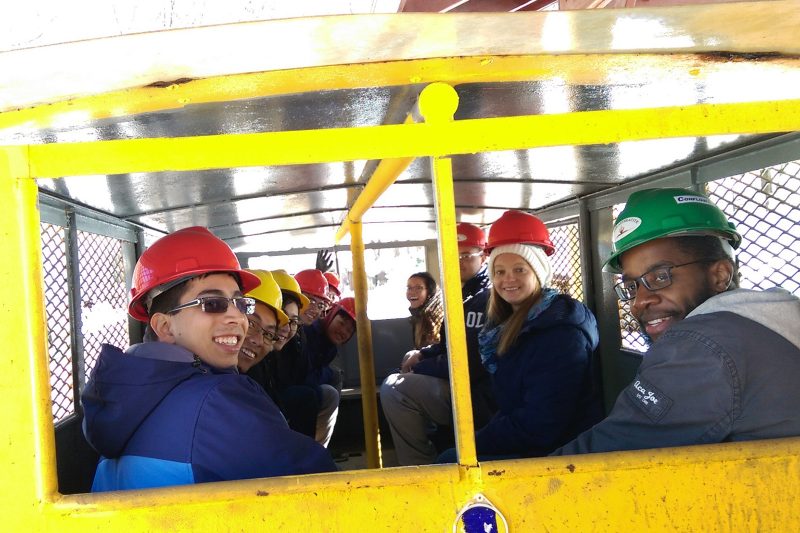Jackson M.A. student Grant Mandigora (at right) with other Yale students during a spring break trip to Pennsylvania.
Over the break, I attended a two-day trip to Pennsylvania to visit a coal mine and a gas compression station as a guest of Yale’s undergraduate Energy Studies Program, which is housed within the Geology department.
On the first day, we visited LeHigh Anthracite mine in the town of Tamaqua, where we got a tour of the entire mining operation by the mine’s safety officer. Tamaqua is a town that has long been known for its coal mining, but the effects of mechanization as well as a slow shift away from coal have resulted in many mining jobs being shed. Consequently, the town has suffered with many miners becoming unemployed. LeHigh has gone from historic peaks of employing thousands of miners to only a hundred now, with the possibility of further reducing the number of employees.
The management of LeHigh seems to be aware that in the not-so-distant future, coal will be one of the least used power generation sources for a variety of reasons. One of these is that about 74 percent of all coal-fired power plants in the U.S. are at least 30 years old, and the average life of such plants is just 40 years. A number of these plants are reaching retirement age, and it is unlikely that new coal-fired power stations will be built in future, especially with the current low cost of natural gas.
Intriguingly, the vast majority of the Anthracite (one of the the purest grades of coal) mined by LeHigh does not go towards power generation. Instead, some of it is used for other purposes, such as water purification.
After visiting the active mine, we went on a tour of the old underground mines, which provided us a stark reminder of just how dangerous underground mining was many years ago and perhaps to this day. In general, ventilation is not good, the light is usually poor and at the time we were there it was very cold. Our guide took us through the maze of passages that miners had to navigate back in the day with all its safety hazards, including mice and other creatures that can’t be readily identified in the low light.
Overall, this visit was an eye-opener. It would be remiss of us to automatically dismiss coal as as source of energy; there is still a place for it (and fossil fuels) in our global energy mix because of its relatively low Levelized Cost of Electricity (LCOE) in addition to being a source of base load power. The advent of natural gas and the significant drop in the price of renewable energy does provide hope that perhaps in 50 or 60 years time, a low-carbon future is possible.
